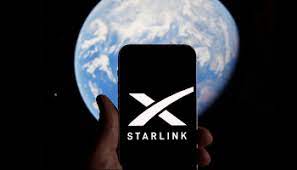A recent report published by the Wall Street Journal says the Starlink division of SpaceX has been unable to meet the lofty standards that it had established for both itself and its investors.
According to the findings of the analysis, Starlink, which was projected to have 20 million users and earn over $12 billion in revenue by the year 2022, concluded the year with only 1.5 million subscribers and $1.4 billion in income. This is far lower than the projections.
This information was revealed in a presentation that SpaceX gave in 2015 in order to entice potential investors. The presentation forecasted rapid expansion for the satellite internet service. However, the current situation is very different from these estimates, which highlights the difficulties involved in constructing a global satellite network.
“Starlink hasn’t signed up customers as quickly as SpaceX had hoped,” the WSJ wrote. “Toward the end of last year, Starlink had more than one million active subscribers, SpaceX has said. The company thought its satellite-Internet business would have 20 million subscribers as 2022 closed out, according to SpaceX’s 2015 presentation.”
It would appear that the low rate of consumer uptake for Starlink is a big issue contributing to the company’s poor success. Although the organisation stated that it had “well over” 1.5 million users all over the world, it is clear that it had a difficult time accomplishing the targets it had set for itself initially. According to the findings of the survey, the appeal of this technology is reduced in areas that have access to high-speed broadband that is both affordable and widely available.
In South Africa, for example, the Independent Communications Authority of South Africa (ICASA), the country’s telecoms regulator, has ordered IT Lec, the only company rerouting Starlink’s network, to stop the importation of Starlink kits. ICASA is the country’s telecoms regulator. In addition to this, it demanded that all active Starlink internet services already being provided to consumers in the country be terminated by the internet service provider (ISP) situated in the Northern Cape.
Because of this, SpaceX has placed South Africa in the category of a low-priority area for the possibility of a launch. The corporation claimed that it has a method for ranking countries in preparation for the introduction of Starlink. High focus is given to entering markets in which there are no requirements for registration or licencing.
Finally, nations that SpaceX feels will present issues in terms of licencing are considered to be of low priority. nations with licencing needs but minimal prospective challenges are considered to be of medium importance.
Read also: SpaceX Initiates tender offer of $750 Million
SpaceX continues to have high hopes for Starlink
Despite failures, SpaceX hopes to make Starlink economical by 2023, a turning point in global networking.
The satellite business is projected to profit this year, according to President and COO Gwynne Shotwell in February. Starlink’s profit or loss is unknown, although the WSJ claimed that SpaceX “eke[d] out a small profit in the first three months of [2023] after two annual losses.” Q1 2023 SpaceX reported a $55 million profit on $1.5 billion in revenue.
With over 4,700 LEO broadband satellites, Starlink has the greatest network. This technical marvel allows the company to supply high-speed internet to remote places without cable or fibre. The research notes the difficulties of maintaining quality and speed as the consumer base develops.
“The majority of the world’s population that the business could serve and that can afford high-speed broadband lives in cities. In those regions, Internet service is readily available, usually offers cheaper monthly costs than Starlink and doesn’t require specialized equipment” WSJ wrote in the report.
Musk, known for his lofty aspirations, set Starlink’s bar high. He also acknowledged satellite internet projects’ risks and bankruptcies. His recent, cautious public pronouncements regarding its potential, especially in densely populated urban regions, contrast with the earlier forecasts.
He added in 2020, “That’ll be a big step to have, like, more than zero [LEO satellite companies] in the not-bankrupt category.” Starlink may be spun out and sold by SpaceX.
Musk halts Ukrainian-Russia attacks, prevents Starlink usage
Starlink “might have” broken even with user terminals
Musk stated in June 2021, “We are losing money on that terminal right now. We pay almost $1,000 for that terminal.” Starlink charged $499 for the user terminal, and Musk said he wanted to “reduce the terminal cost from $500 to, I don’t know, $300 or $250, or something like that.” Starlink upped the terminal price from $499 to $599 in early 2022, notwithstanding that statement.
SpaceX’s claim that it no longer loses money on user terminals is intriguing. As it cuts costs and expands its reach, this move may improve the company’s finances.
“We were subsidizing terminals but we’ve been iterating on our terminal production so much that we’re no longer subsidizing terminals, which is a good place to be,” Hofeller said, according to the CNBC article.
Starlink’s home service costs $120 a month in much of the US and $90 in “high-availability” places. This pricing puts it in direct rivalry with established internet providers and emerging digital divide technology.




